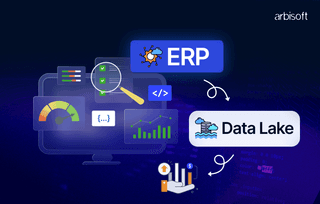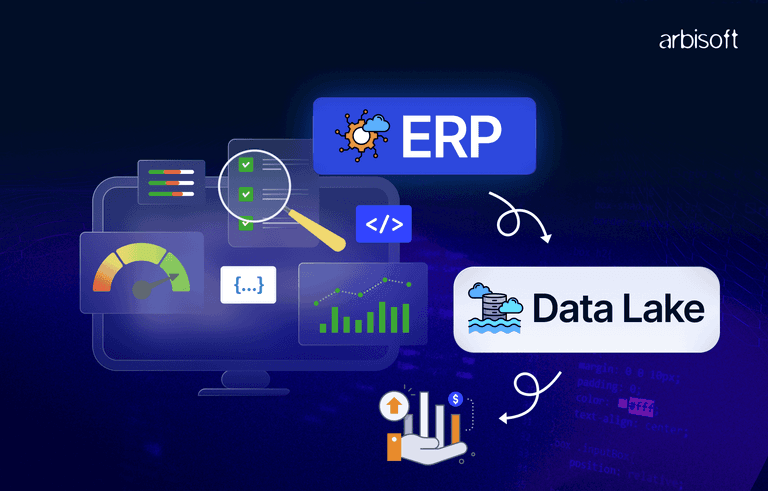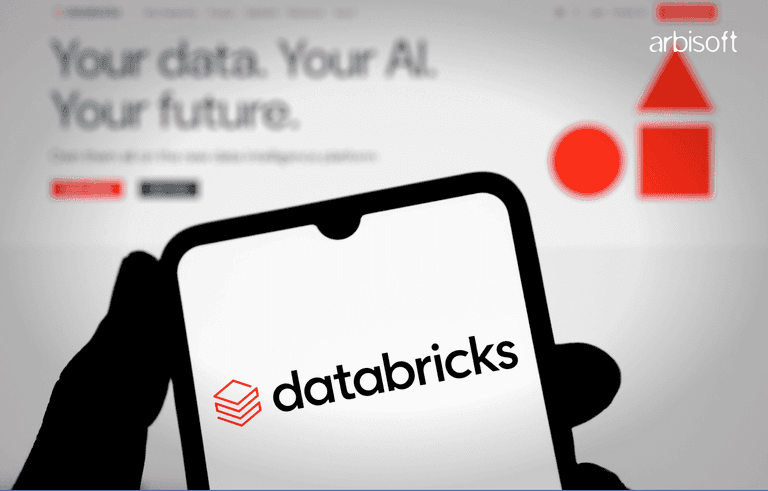We put excellence, value and quality above all - and it shows




A Technology Partnership That Goes Beyond Code

“Arbisoft has been my most trusted technology partner for now over 15 years. Arbisoft has very unique methods of recruiting and training, and the results demonstrate that. They have great teams, great positive attitudes and great communication.”
Implementing Digital Transformation Best Practices: A Comprehensive Guide

In today's rapidly evolving business landscape, digital transformation (DT) has transcended the realm of mere jargon. It has emerged as a strategic imperative for organizations striving to maintain their competitive edge and relevance. By tapping into the capabilities of technology to overhaul processes, elevate customer experiences, and streamline operations, digital transformation has the potential to usher in enhanced efficiency, innovation, and overall growth.
Understanding Digital Transformation
Before delving into the nuances of how to implement digital transformation, it is paramount to grasp the essence of the concept.
To put it simply, digital transformation encompasses the seamless integration of digital technologies across all facets of a business, culminating in fundamental shifts in how the business functions and delivers value to its customers. For a more in-depth look into this concept, check out our blog on what is digital transformation.
How to Implement Digital Transformation Best Practices
Implementing digital transformation (DT) best practices requires a strategic and systematic approach that encompasses various dimensions of an organization. As businesses embrace the era of digital evolution, it's imperative to adopt a methodical framework to ensure that these practices yield tangible outcomes. Collaborating with a digital transformation partner amplifies the impact of this strategic shift.
In this section, we outline a step-by-step guide to effectively implement DT best practices and embark on a successful transformation journey. Read more about the best practices in our previous blog: Mastering Digital Transformation: 10 Best Practices for Success.
Best Practice 1: Establish a Vision and Strategy
The bedrock of a successful digital transformation journey rests on the formulation of a coherent vision and strategy. This mandates articulating the objectives of the transformation—whether they involve enhancing customer experiences, optimizing internal processes, or catalyzing innovation.
This demands a holistic view of long-term goals, encompassing a roadmap that outlines how technology will serve as the catalyst propelling these ideas to realization. By instilling a strategic lens, organizations ensure that resources are judiciously allocated, and the transformation trajectory remains in tandem with overarching business objectives.
How to Implement?
Here’s how to ensure your organization has the vision and accompanying long-term strategy to implement digital transformation.
1. Leadership Alignment: Ensure that your organization's leadership, including executives and key decision-makers, are aligned on the digital transformation vision and strategy. Hold discussions and workshops to gain consensus and commitment.
2. Start Small, Scale Fast: While you may have a long-term vision, begin with smaller pilot projects to demonstrate quick wins and build momentum. These successes can help secure buy-in from skeptics and fund larger initiatives.
3. Risk Assessment: Identify potential risks and challenges that could impede your transformation efforts. Develop mitigation plans to address these risks and ensure a smoother journey.
Steaming Ahead: Starbucks' Digital Transformation Steps
One real-life example of a successful digital transformation vision and strategy is the transformation undertaken by Starbucks. Their vision was to become a tech-driven company while enhancing the customer experience. The company introduced the Starbucks mobile app, which allowed customers to order and pay for drinks ahead of time, earn rewards, and access personalized offers. Their efforts have also included an enhanced rewards program, integration with digital wallets, partnerships with delivery services, personalized marketing, and IoT.
Not only this, to improve transparency in their supply chain it also initiated automation for supply chain optimization, digital innovation centers, voice ordering, augmented reality features, and even blockchain technology.
This not only improved customer convenience but also provided Starbucks with valuable data for personalization and marketing. By continually refining its digital initiatives, Starbucks has successfully integrated technology into its operations and grown its digital customer base.
Best Practice 2: Foster Leadership Commitment
Digital transformation necessitates more than passive endorsement; it requires the wholehearted commitment of leadership. When leadership visibly champions digital transformation, it sends a clear message to the entire organization. This cascading commitment invigorates employees across various levels, nurturing a culture that embraces and propels the digital metamorphosis.
How to Implement?
Here are steps to ensure that your organization is nurturing leadership commitment in order to successfully execute digital transformation.
1. Lead by Example: Senior executives and leaders should lead by example. They must actively engage with digital transformation initiatives and be visible champions of the process. This includes using digital tools themselves, attending relevant training, and openly endorsing the changes.
2. Alignment with Business Objectives: Ensure that digital transformation efforts are closely aligned with the overall business objectives and strategies. Leaders should be able to articulate how these initiatives contribute to the company's success.
3. Set Clear Expectations: Define clear expectations for leadership involvement in digital transformation. This includes their role in decision-making, resource allocation, and communication with employees regarding the transformation journey.
4. Allocate Resources: Leadership commitment should translate into the allocation of necessary resources, including budget, technology, and talent, to support digital initiatives. Leaders should prioritize these resources based on the strategic importance of the transformation.
Leading the Healthcare Digital Transformation at Cleveland Clinic
A notable example of leadership commitment to digital transformation is seen in the healthcare industry with Cleveland Clinic. The CEO, Dr. Tom Mihaljevic, recognized the potential of digital technologies to improve patient care and operational efficiency. Under his leadership, the organization invested heavily in telemedicine and digital health solutions.
During the COVID-19 pandemic, this commitment to digital transformation allowed Cleveland Clinic to rapidly expand its telehealth services, ensuring patients had access to care while minimizing in-person visits. This leadership commitment not only benefited patients but also positioned the organization as a leader in digital healthcare delivery.
Best Practice 3: Customer-Centric Approach
At the nucleus of digital transformation lies the enhancement of customer experience. The cardinal rule is understanding the customer—their aspirations, tribulations, and preferences—and subsequently orchestrating digital solutions that cater to these demands.
By assigning preference to the customer within the transformation paradigm, organizations engineer changes that resonate with customer sensibilities. Let’s take a look at how.
How to Implement?
Here are the key measures to establish a customer-centric approach within your organization to effectively implement digital transformation.
1. Customer Journey Mapping: Mapping the customer journey involves tracing the various points of contact and interactions between a customer and your organization. By doing this, you can pinpoint places where digital solutions can improve the overall customer experience.
2. Data Analytics: Use data analytics and machine learning services to extract valuable insights from customer data. Predictive analytics, in particular, empowers you to anticipate customer requirements and offer personalized product or service recommendations.
3. Personalization: Implementing personalization strategies across digital channels involves customizing content, recommendations, and communications based on individual customer preferences and behaviors. This approach significantly boosts engagement and customer satisfaction.
4. User-Centered Design: Prioritizing user-centered design principles during the development of digital solutions is essential. It guarantees that websites, mobile apps, and other digital interfaces are intuitive, user-friendly, and accessible.
Driving Success: Tesla's Customer-Centric Digital Transformation
Tesla's online configurator allows customers to customize their cars in various ways, including choosing the color, wheels, interior, and options. This gives customers a sense of ownership and control over their purchase even before sitting in the car for the very first time, which can lead to a more positive customer experience.
Tesla also uses data analytics to personalize its marketing campaigns and customer service. For instance, Tesla might send targeted email campaigns to customers who have shown interest in a particular model or feature. Tesla might also use data analytics to identify customers who are likely to have problems with their cars and proactively reach out to them with support.
By putting the customer at the center of its digital transformation, Tesla has been able to create a more personalized and engaging experience for its customers. This has helped the company build a loyal customer base and become one of the most popular electric car brands in the world.
Best Practice 4: Empower and Upskill Employees
Nurturing a culture of perpetual learning and innovation within the organization not only helps employees navigate digital solutions but also propels them to champion and implement these solutions.
Empowered employees constitute the bedrock of change, acceptance, and propagation. When employees are proficiently equipped, they transform into invaluable assets, propelling the adoption and triumph of digital initiatives.
How to Implement?
Here are the essential steps to empower and enhance the skills of your employees within your organization to successfully execute digital transformation.
1. Assessment of Skills: You can begin by conducting a thorough evaluation of employees' digital skills and knowledge. This assessment will help you identify skill gaps and areas in need of improvement.
2. Tailored Training Programs: Develop training programs tailored to the specific needs of different employee groups. This may include digital literacy training for those with limited digital skills and more advanced training for technical roles.
3. Digital Learning Platforms: Invest in digital learning platforms and resources that provide employees with on-demand access to training materials, tutorials, and courses. These platforms can facilitate self-paced learning.
4. Cross-functional Collaboration: Promote collaboration and knowledge sharing among employees from different departments. Cross-functional teams can work together on digital projects, fostering a culture of learning and innovation.
5. Mentoring and Coaching: Pair employees with mentors or coaches who can provide guidance and support as they navigate digital tools and technologies. Mentoring can accelerate skill development.
Microsoft’s Digital Learn and Grow Journey
Microsoft is a prominent example of a company that prioritizes employee empowerment and upskilling in the context of digital transformation. It launched a program called Microsoft Learn, which offers a wide range of free online courses and resources covering topics such as cloud computing, artificial intelligence, and software development.
Microsoft also encourages its employees to pursue certifications and offers financial incentives for obtaining them. This commitment to employee development not only enhances the company's digital capabilities but also fosters a culture of learning and innovation throughout the organization.
Best Practice 5: Data-Driven Decision-Making
Data is the compass in the digital odyssey. By leveraging data analytics, organizations unearth invaluable insights that illuminate the trajectory of decision-making, equipping organizations to fine-tune processes, optimize customer experiences, and attain a thorough understanding of market dynamics.
How to Implement?
Here’s how to strengthen data-driven decision-making within your organization to successfully carry out digital transformation.
1. Data Strategy: Develop a comprehensive data strategy that outlines how data will be collected, stored, analyzed, and used to support digital transformation goals, leveraging business intelligence solutions to turn data into actionable insights.At this stage, it is important to ensure alignment between data strategy and business objectives.
2. Data Collection and Integration: Implement systems and processes for collecting and integrating data from various sources, including customer interactions, IoT devices, and digital platforms. It is necessary to ensure that data is centralized and accessible for analysis.
3. Analytics Tools: Invest in advanced analytics tools and platforms like Microsoft Power BI, Spark, and Tableau to enable data analysis, visualization, and reporting. These tools should support both descriptive analytics (what happened) and predictive analytics (what might happen).
4. Data Literacy: Promote data literacy within the organization. Provide training and resources to ensure that employees, including decision-makers, have the skills to interpret and use data effectively.
Streaming Success: Netflix’s Data-Driven Journey
Netflix is a prime example of a company that relies heavily on data-driven decision-making. It uses data not only for content recommendation algorithms but also for content production decisions. By analyzing viewership data, Netflix can identify popular genres, predict the success of original content, and optimize the user experience. This data-driven approach has been instrumental in making Netflix one of the leading streaming platforms in the world, demonstrating the power of data in digital transformation.
Best Practice 6: Agile Implementation and Iteration
The conventional waterfall methodology might fall short in the realm of digital transformation. Embracing an agile approach that accommodates iterative development and swift adaptations based on feedback is pivotal. This supple approach ensures that solutions retain alignment with the dynamic contours of evolving business needs.
How to Implement?
Here’s how to introduce agile implementation and iteration processes within your organization for digital transformation.
1. Agile Framework Adoption: Embrace agile methodologies such as Scrum or Kanban for your digital transformation projects. These frameworks prioritize flexibility, collaboration, and iterative development.
2. Cross-Functional Teams: Form cross-functional teams that include members from different departments and skill sets. These teams can work collaboratively to deliver small, incremental improvements.
3. Iterative Development: Break down larger projects into smaller, manageable phases. Each phase should result in a deliverable product or feature. Continuously gather feedback and iterate on these deliverables.
4. Feedback Loops: Establish feedback loops with customers, end-users, and stakeholders. Actively seek their input and incorporate their suggestions into the ongoing development process.
5. Fail Fast, Learn Faster: Encourage a culture where it's acceptable to fail as long as lessons are learned. This promotes experimentation and innovation, as well as a willingness to pivot when necessary.
How Spotify’s Agile Symphony Enabled Successful Digital Transformation
One notable example of agile implementation and iteration in digital transformation is Spotify. Spotify's engineering teams follow a model called "Squad, Tribe, Guild, and Chapter." Squads are small, cross-functional teams that work on specific features or areas.
It operates in two-week sprints, continuously releasing updates and new features. This approach allows Spotify to respond quickly to user feedback, experiment with new features, and iterate on their platform to meet evolving user needs. It's a testament to how agile methodologies can drive innovation and success in the digital space.
Best Practice 7: Collaborate and Partner
The evolving landscapes of digital transformation frequently necessitate collaboration with technology partners, consultants, and vendors—entities armed with specialized expertise. This alliance amplifies organizations' capacity to surmount challenges and expedite the implementation trajectory.
How to Implement?
Here are a few measures to promote and facilitate collaboration and partnership within your organization for the successful execution of digital transformation.
1. Clearly Defined Objectives: Establish clear objectives and expectations for collaboration. Define the scope of the partnership, roles, and responsibilities, and the desired outcomes.
2. Strategic Alignment: Ensure that the selected partners align with your organization's strategic vision and values. A shared sense of purpose and mission is crucial for a successful collaboration.
3. Open Communication: Foster open and transparent communication with partners. Regularly engage in discussions to exchange ideas, provide updates, and address any issues that may arise during the transformation journey.
Celebrating Synergy: The Power Duo Redefining Digital Transformation Alliance
The Microsoft and Red Hat partnership marks a significant milestone in the digital transformation landscape. This collaboration has seamlessly blended two industry giants, harnessing their respective strengths in open-source software, cloud computing, and hybrid cloud deployments.
For Microsoft, the acquisition of Red Hat has expanded its cloud computing capabilities, notably incorporating Red Hat's OpenShift container platform into the Azure cloud ecosystem. OpenShift's popularity in developing, deploying, and managing containerized applications has been a pivotal addition, facilitating flexible and scalable application deployment across on-premises and cloud environments. Moreover, Red Hat's expertise in security bolsters cloud security measures, offering businesses robust protection for their applications and data.
Additionally, the partnership fosters agility, enabling accelerated development and deployment cycles, providing businesses with a competitive edge while simultaneously reducing IT infrastructure and operational costs.
In essence, the Microsoft and Red Hat collaboration signifies the increasing significance of open-source software and hybrid cloud deployments in the digital transformation journey, poised to expedite digital transformation across businesses of all sizes.
In a Nutshell
The implementation of digital transformation best practices is a multi-faceted endeavor, necessitating meticulous planning, unwavering leadership, and a customer-centric ethos. By articulating a clearly defined vision, fostering leadership commitment, and empowering employees, organizations navigate the intricate labyrinth of digital transformation with ease.
It’s important to remember that digital transformation is not a one-off affair, but rather an ongoing expedition that mandates continuous adaptation to flourish in the digital era. As organizations transform, these best practices function as a beacon, steering them toward sustainable growth and innovation in an era characterized by digital renaissance.
Is your business prepared to take the leap into the digital transformation realm? Explore the reasons why having a digital transformation partner can be a game-changer. Find out in our latest blog.
























